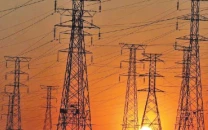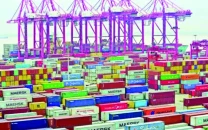Impact of rising external debt on economic growth
To reduce reliance on debt, industrial and agricultural sectors need to be strengthened

PHOTO: INP
It helps sustain growth by reducing the investment-savings gap, brings funds for spending on modern technology and increases productivity. Pakistan’s investment-savings gap, however, has drastically increased over time.
China likely to build military base in Pakistan: US
Pakistan lacks financial, human and physical capital and has a vulnerable macroeconomic condition. It is natural then that external debt is required to supplement domestic savings. The question, however, is why do countries borrow?
Borrowing is indeed as old as the nations. The reason behind this is the inability of countries to create enough savings for infrastructure investment and growth. The reason behind insufficient savings is, in turn, low income levels, which are mostly consumed rather than saved. Countries borrow for financing public expenditures, without massively increasing tax rates, so that an enabling environment is created for people to invest funds in different productive sectors of the economy.
Debt becomes necessary to fulfil the government’s financial requirements, which otherwise can be met only by increasing the tax rates – the latter being an unpopular decision for the masses and hence not pursued by most governments.
In case a government is facing a budget deficit, the best alternative is to find other sources (borrow) for bridging such a deficit. The story of Pakistan with regard to external debt/foreign debt is self-explanatory.
In 2013, Pakistan’s external debt was $60.9 billion, which increased to $65.4 billion in 2014. In 2016, it reached $73.1 billion. Now, by March 2017 it has already increased by more than $2 billion to $75.7 billion. This continuous increase in external debt, even after considering the arguments mentioned above, is not sustainable for the country’s long-term growth.
In Pakistan’s case, external debt is being obtained against different collaterals, such as government buildings, which may lead to the sovereignty problem.
The question arises whether any government in history ever paid back the entirety of its outstanding foreign debt, if yes, then how?
Romania’s example
Romania’s political independence from the Soviet Union and her protest against the invasion of former Czechoslovakia in 1968 drew the interest of western powers, who briefly believed that Romania was an anti-Soviet maverick and could create a schism in the Warsaw Pact if funded appropriately.
Romania did not realise that the funding was not always favourable. It was able to borrow heavily (more than $13 billion) from mostly Nato countries to finance economic development programmes, but these loans ultimately devastated the country’s finances.
In an attempt to correct this, Romania’s Prime Minister Ceausescu decided to repay the country’s foreign debt. He announced a referendum and managed to change the constitution, adding a clause that barred Romania from taking foreign loans in the future.
According to official results, the referendum yielded a nearly unanimous “yes” vote. In the 1980s, Ceausescu ordered the export of most of the country’s agricultural and industrial products in order to repay its debts. The resulting domestic shortages made everyday life of Romanians a fight for survival as food rationing was introduced and heating, gas and electricity blackouts became the norm.
In the decade, there was a steady decrease in the Romanian population’s standard of living, especially the availability and quality of food and other basic goods. The debt was fully paid in the summer of 1989.
Pakistan’s case
Pakistan government also took various steps to overcome the debt problem, like the debt limitation law, loan write-offs and rescheduling of debt and liabilities. However, to reduce reliance on foreign debt, we need to strengthen industrial and agricultural sectors and massively increase exports.
Unfortunately, this is not happening in the country. Pakistan’s exports have decreased while public debt has increased.
In 2012-13, Pakistan exported about $24.46 billion worth of goods, which decreased to $20.787 billion in 2015-16.
Exports as a percentage of GDP decreased from 13.3% in 2013 to 12.2% in 2014 and 10.6% in 2015. In 2016, the ratio fell to 8.7%, which according to analysts makes the GDP growth rate of 5.47% in 2015-16 less sustainable.
Development splurge ahead of 2018 polls
Pakistan spends about 65% of its revenue to repay its debt while the remaining 30% to 35% is left for expenditure on defence, health, education, infrastructure etc. That is the reason why Pakistan faces poverty and low standard of living.
Although Pakistan’s foreign exchange reserves of $21.6117 billion are at an all-time high, the major reason behind this is not increased earnings through exports, but significant savings due to low international oil prices and sustained inflow of remittances from overseas Pakistanis abroad.
The sustainability of these reserves can be challenged in the face of declining exports along with the rise in debt.
The writer is a researcher at the Sustainable Development Policy Institute
Published in The Express Tribune, August 7th, 2017.
Like Business on Facebook, follow @TribuneBiz on Twitter to stay informed and join in the conversation.


















COMMENTS
Comments are moderated and generally will be posted if they are on-topic and not abusive.
For more information, please see our Comments FAQ